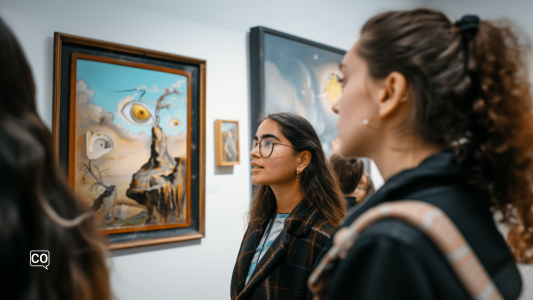Spanish A1.13.3 The Clocks of Dalí Share Copied!
Learn about time and its meaning through a Spanish painting by Salvador Dalí.
Cultura: Los Relojes de Dalí
Aprende sobre el tiempo y su significado a través de una pintura española de Salvador Dalí.

A1 Spanish Art Spain
Level: A1
Module 2: De horas a estaciones (From hours to seasons)
Lesson 13: Decir la hora y leer el reloj. (Telling the time and reading the clock)
Teaching guidelines +/- 10 minutes
Audio and video
Reading and listening exercise
Salvador Dalí es un pintor catalán. Su cuadro "La Persistencia de la Memoria" tiene relojes. Los relojes marcan horas diferentes y representan el tiempo que pasa. Los relojes se derriten. Parece que hace calor. Para Dalí, el tiempo es flexible. No siempre es exacto. El cuadro está en el Museo de Arte Moderno de Nueva York, en Estados Unidos. Su estilo es surrealista.
Translation
Salvador Dalí is a Catalan painter. His painting "The Persistence of Memory" has clocks. The clocks show different times and represent the passage of time. The clocks melt. It seems that it is hot. For Dalí, time is flexible. It is not always exact. The painting is in the Museum of Modern Art in New York, in the United States. His style is surrealist.
Exercise 1: Discussion questions
Instruction: Discuss the questions after listening to the audio or reading through the text.
- ¿Qué objetos se derriten en "La Persistencia de la Memoria"?
- ¿Qué representan los relojes?
- ¿Qué decía Dalí sobre le tiempo? A) Es exacto B) Es flexible
- ¿Te gustan las pinturas de Salvador Dalí?
- ¿Hay alguna obra de arte en tu país que hable sobre el tiempo?
Useful websites to study with your teacher
Discuss and read the following resources during your conversation classes.
